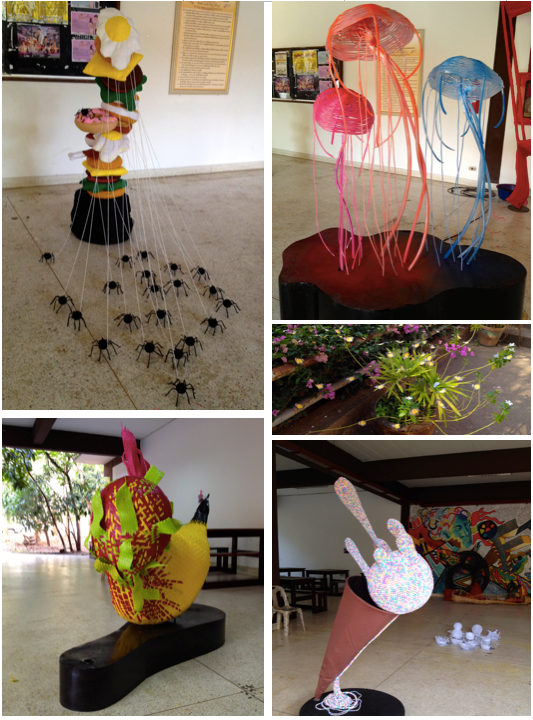KKU’s Artworks in the Faculty of Fine and Applied Arts

The Faculty of Fine and Applied Arts first drew my attention because of its colourful building. Especially, its orange and brown colours in the green forest campus look even more eye-catching. Second, I noticed that there’s a unique coffee shop attached to the other side of the building; it looks classic and elegant under the shade of tall forest trees in the morning time. So, one day, Michelle and I went inside, and found in there art workshop and exhibition of all kinds of artworks. This was kind of surprise to discover art treasures in here. In addition, you can always see 2 dogs playing together in the open space within the area of this Faculty. I am sure art students here must be fond of playing with both of them after their tiresome and exhaustive art working.
After my jogging, I always pass and walk through this Faculty building almost every morning. So I got plenty of opportunities to enjoy their newly created artworks, or even their deserted ones. In general, what I have seen in here include handicrafts of rattan, wood or bamboo; statue of clay material, cast metal art; and crafts of plastic. In view of raw materials, most of them were available from the local natural resources. The themes of artworks could be relevant to their local culture and lifestyle, or environmental concern, for example, baby cradle of different material, bamboo bucket for sticky rice steaming, banana and fire-dragon fruit of plastic.
In general, the featured artworks designed and created by this Faculty can be categorised into three: (1) aesthetic artworks in the Mekong basin; (2) metal casting artworks by using environmentally friendly, inexpensive and efficient folk-wisdom-method; (3) local clay artworks focusing on those of the provinces along Mekong river, including Loei, Ubon Rathathani, Nokornpanom, Nong Khai and Mukdahan. Specifically, aesthetic art in this Faculty relates to folk wisdom, identity, and the interaction of fine arts, such as images of the buddha, wickerwork, mural painting, performing arts and music in the Mekong basin.
Through these artworks I am grasping something more about the region of Issan: what they think, what they believe and how they live.
Aesthetic art
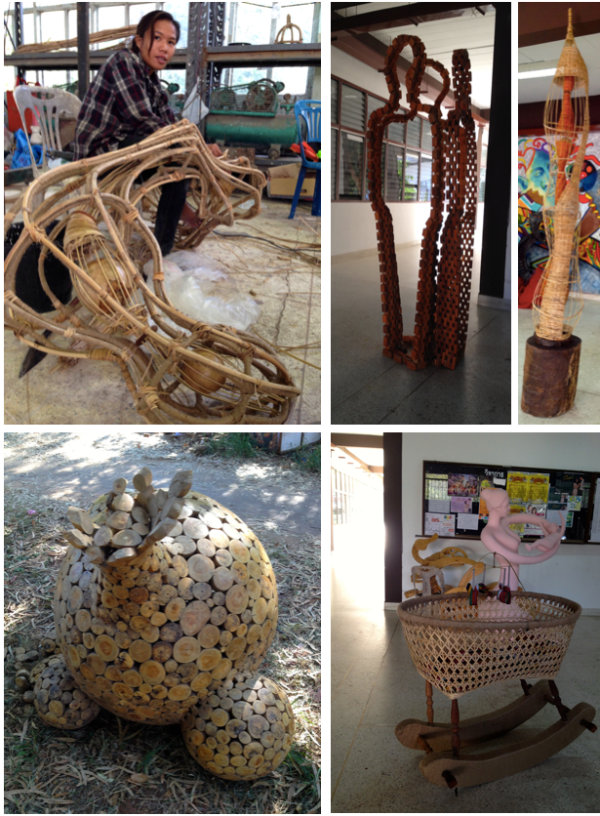
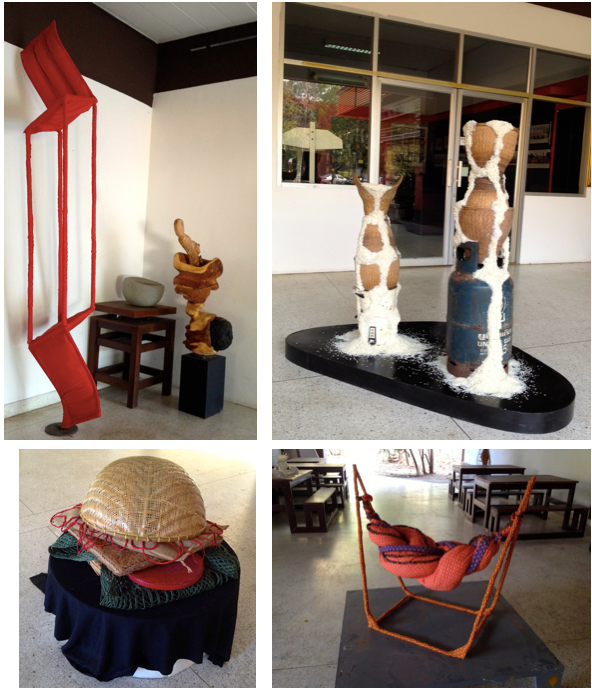
Clay art
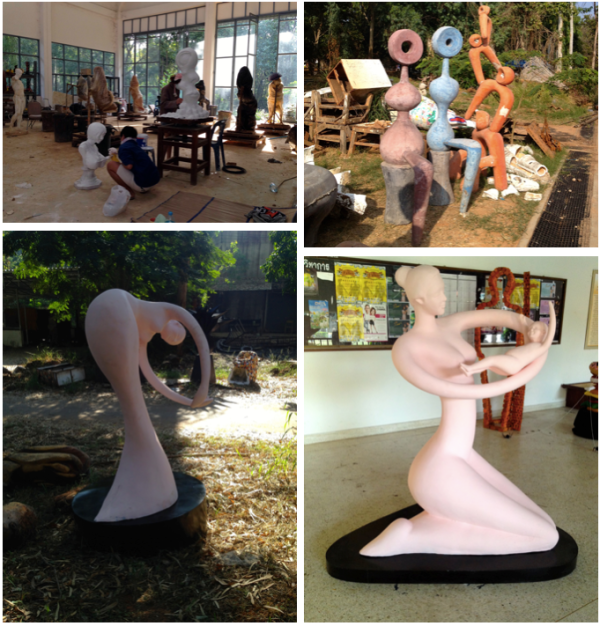
Cast metal art
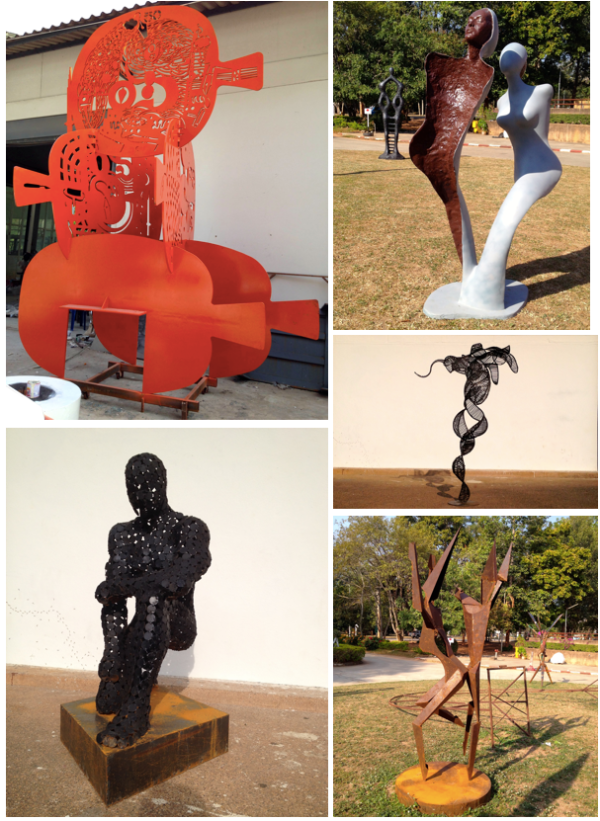
Plastic art
